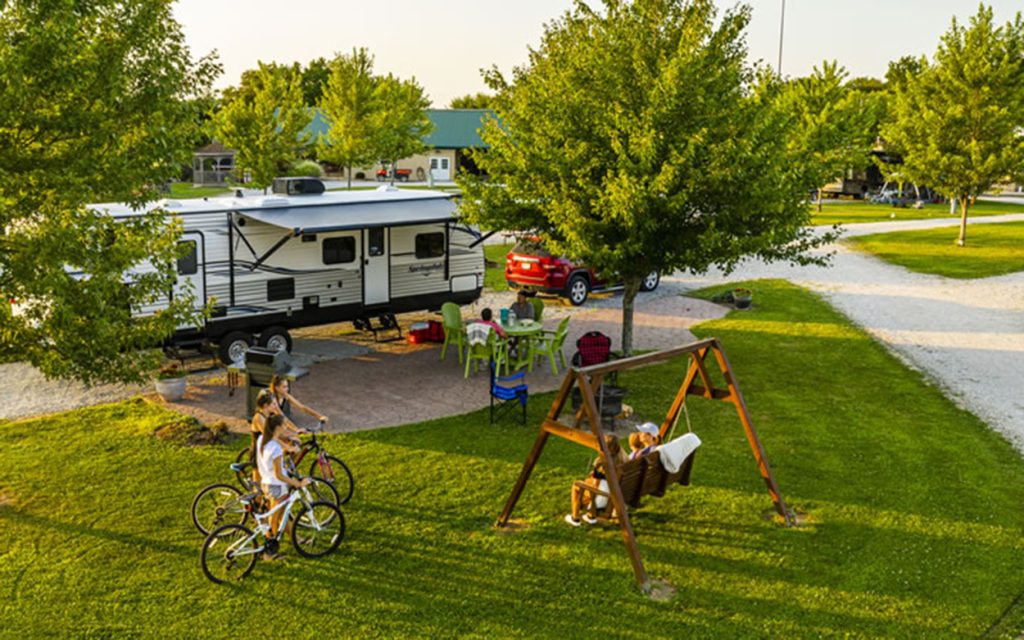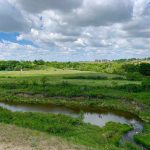
Travel Advertisements
What could make a hound happier than trotting the trails of America’s vast and beautiful National Parks? Sadly, most of the country’s 63 National Parks don’t allow dogs at all, but there are some that permit well-behaved canines and their human counterparts in designated areas. We asked numerous bloggers and travel experts for tips on National Parks where you can bring your dog. Check each park’s website for more information and always follow the acronym of the B.A.R.K. Ranger program: Bag your pet’s waste, Always leash your pet, Respect wildlife, and Know where you can go.
✈️ Use flight comparison sites ✈️
If you are looking for affordable flights and vacation travel, we recommend
Skyscanner.
You can also explore the world easily using the following excellent websites:
?Explore your destination with
Expedia 's budget-friendly car rental services.?
? Uncover incredible savings on hotels and travel with Easyjet.?
There, you'll find a huge selection and great prices.
» Book Easyjetr Now «
Arizona: Blue Mesa Trail, Petrified Forest National Park
If you and your canine pal plan on exploring the dramatic purple and blue badland hills and petrified wood of Petrified Forest National Park, follow the advice of seasoned travel writer Matt Kirouac, who used to co-host Parklandia , an iHeartRadio podcast on National Parks, RV life, and travel. He recommends the one-mile Blue Mesa Trail loop because it’s short and scenic. “It’s the most vibrant display of two of the park’s most colorful features, petrified wood and sloping badlands,” says Kirouac. “Both [are] in abundance along an easy and accessible paved path where leashed dogs are welcome.”
New Mexico: Alkali Flat Trail, White Sands National Park
All of White Sands is dog friendly, so you and your beloved companion can easily explore the park’s glistening, wind-rippled white-sand dunes. But for one of the best routes, Melissa Chen of dog-friendly travel blog The Modern Female Hiker recommends Alkali Flat Trail, where the white gypsum sand is cool to the touch and you can easily find a quiet spot to rest. “There is very little shrubbery at Alkali Flat, making the sand glow across the dunes,” says Chen. “If you follow the black diamond trail markers, the entire loop is 5 miles.”
South Carolina: Bates Ferry Trail, Congaree National Park
Congaree is known for its boardwalks, rivers, and dense, old-growth hardwood forest, featuring some of the oldest and tallest trees east of the Mississippi. According to Morgan Jarman, who’s been living the van life for more than four years and co-runs the travel blog Nomadic Tortoise, Bates Ferry Trail at Congaree “is not as busy as the more popular trails in the park,” plus it’s just 2.2 miles out and back leading to the Congaree River. “You also have the opportunity to check out the General Greene Tree, the largest bald cypress tree in the park,” she says.
Ohio: Tinker’s Gorge Scenic Overlook Trail, Cuyahoga Valley National Park
This park along the banks of the Cuyahoga River, between Cleveland and Akron, draws nature fans with its scenic railway, canal tow-path trail, and gorgeous waterfalls. If you’re bringing your pup along, however, Erika Barnes, CEO of dog-focused website Petsmitten, recommends exploring Tinker’s Gorge Scenic Overlook Trail. This trail is “fairly quiet,” she says “but it does attract other hikers, so you’ll probably meet other people on the trail—worth bearing in mind if your dog isn’t great with people or other dogs.” Barnes recalls a small section where a bike path meets the trail and overall loves this trek. “The trail is beautiful, taking in Bridal Veil Falls, and it’s dog-friendly.”
West Virginia: The Sandstone Falls Boardwalk, New River Gorge National Park
Dr. Sabrina Kong, a California-based veterinarian and contributor to the Doodle-focused website WeLoveDoodles, says the Sandstone Falls Boardwalk at newly minted River Gorge National Park leads to the largest waterfall on the New River. “The trail is extremely easy, and its length is only 0.2 miles, which means neither you nor your dog will have any trouble getting to the end. Walking your dog near such an impressive waterfall is something every owner should experience!”
Arkansas: Goat Rock Trail, Hot Springs National Park
Kimberly Deese of San Diego-based podcast Travel Squad says Goat Rock Trail has a “beautiful summit and the path is shady. Keep your pup leashed as you could encounter wildlife.” Sean Lau of outdoor and adventure travel blog LivingOutLau agrees, noting Goat Rock Trail is mostly shaded and only takes about one hour to complete. “Its most iconic feature is the Goat Rock Viewpoint, which offers expansive views of the lush landscapes of Arkansas,” says Lau. “The trail is only 1.1-mile one way, which was perfect for my 1-year-old Pomeranian. But if your dog needs more exercise, there are other longer and more strenuous trails in the park!”
Washington: Kalaloch Area, Olympic National Park
Sandy Kalaloch Area is “rarely busy so there’s lots of space to find solitude,” says Jennie Flaming of Ordinary Adventures, and outdoor adventure blog. “In addition to that, the Kalaloch Lodge has dog-friendly cabins, says Flaming. “They give you special treats when they know you are bringing a dog and provide things like water bowls.” The lodge is near dog-friendly trails in the Quinault Rain Forest, which adjoins the park on national forest land.
Colorado: Mosca Pass Trail, Great Sand Dunes National Park
Blogger Alex Schnee, of outdoor adventure blog Alex on the Map, says Mosca Pass Trail offers “an ideal out-and-back for any skill level. If your pooch gets tired, you can always turn around and head back down the trail,” she says. Bonus: Most of Great Sand Dunes offers a desert terrain. “If wildflowers and butterflies aren’t your style, then you have much of the park to explore with your dog.”
Maine: Carriage Roads, Acadia National Park
New York Times bestselling author and travel journalist Larry Olmsted says Acadia’s 45 miles of Carriage Roads offer an entire second network of walking options beyond the more technical trails, making them suitable for all physical abilities. “Most are flat and very easily walked,” says Olmstead, “but there are a few steep ascents, especially the entry from the Hulls Cove Visitor Center and the spurs to the top of Day Mountain and Bald Peak.” Built between 1913 and 1940, the network of broken-stone roads were a gift from the Rockefeller family, and wind around the mountains and valleys of the park, offering sweeping vistas.










